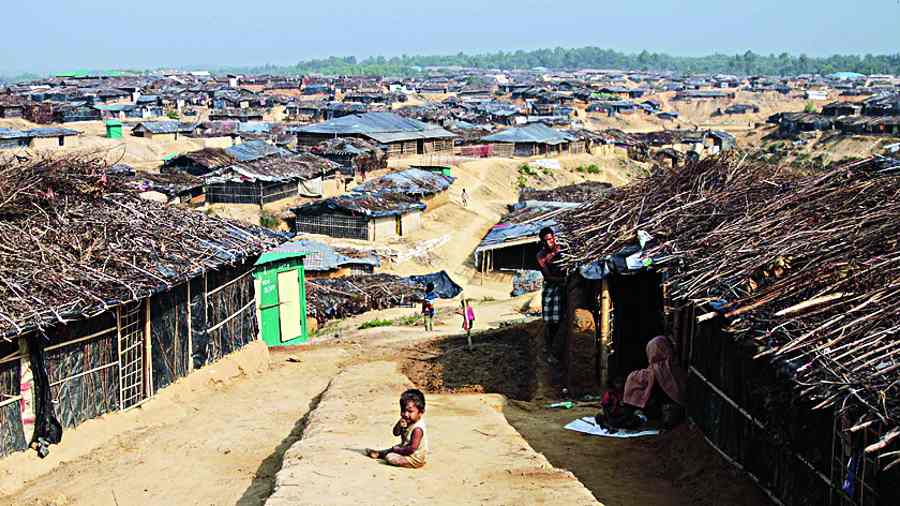Book name: The Atlas of Disappearing Places: Our Coasts and Oceans in the Climate Crisis
Author name: Christina Conklin and Marina Psaros
Publisher: The New Press
Price: Rs 2,316
There is now a veritable cottage industry of literature on climate grief, mourning and resilience. They tell us the stories of the hapless marine creatures bloated with micro-plastic, the colourless algae in an oxygen-poor ocean, of fish that have lost their sense of smell, and the shellfishes that are fast disappearing from our coastal cuisine. Then the standard plot thickens to outline a cost-benefit analysis in the name of fortress conservation. They remind us that there must be losses, which means that some coastal communities will have to pack up and leave their histories, cultures, homes and livelihoods behind for the sake of the coasts, biodiversity and the fragile ecosystem. Carol Fabotko, writing about the future of the Tuvalu islands, has termed policy literature dripping in cost-benefit analysis the story of ‘wishful sinking’.
It is this wishful sinking that the visually-charged The Atlas of Disappearing Places brings to us. Christina Conklin and Marina Psaros strike a tragic note with disturbing lyricism to outline the story of our “shared vulnerability”, “trauma” and “loss”. The onslaught of the imperial “we” and “our” that pepper these pages written from the global North begs the question that has been asked before: who is in and out of this ‘we’? The book is interspersed with speculative fiction about the future which works well to elide the fact that the future of the cli-fi is the present of the global South. This book epitomizes and aestheticizes climate gloom, while simultaneously taking us on a gut-wrenching journey through various lifeworlds on the brink of disappearance.
Reading this book is to experience a globetrotting journey into a climate abyss. Part one hops over Hawaii, the Arabian Sea, Maine, the Cook Islands and San Francisco Bay to uncover climate change coded into the chemical history of the planet. The second part explores what happens to Hamburg, Houston, New York, San Juan and Kutupalong Camp as they are caught in the furies of super cyclones. Part three takes us through the collapse of biospheric and biotic worlds as the waters warm over the Arctic, Atlantic and Pacific and the glaciers retreat in the Antarctic. The rising seas close the fourth section as we witness their devastations in Shanghai, Virginia, Vietnam, Britain and Japan. Expansive in scope, each chapter ends with a speculative fiction of events that take place in 2050. Exploring geological knots of time, some of the futures reach back 55 million years to the Paleocene-Eocene. Dystopic and humbling in equal parts, Conklin and Psaros work out the concepts of climate futures. These are risk, resilience, vulnerability, power, violence, disappearing commons and the story of exacerbated ethnic cleansing and geopolitical manoeuvring to secure the new frontiers of energy. The mixed format of paintings visualizing the graphs and pie-charts of oceanic acidification or deoxygenation is methodologically novel and does the work of communicating the scale of the disaster. Among the various chapters, the one on Houston unpacks the environmental racism that is at the heart of our climate crisis. Hurricane Harvey meant that people living on the economic margins and on the wrong side of the American colour line were not only flooded but terrifyingly exposed to environmental toxicity. In a similar vein, the chapter on the Kutupalong Camp in Bangladesh strikes a different chord, evocatively blurring the line between what constitutes ethnic violence and climate displacement to reveal their entanglement. The rich and varied documentation of the multiple meanings of climate disasters ends with a clarion call not for structural change but with the neoliberal plea to individual retooling of lifestyle.
For all its methodological originality and visually spectacular presentation, I came away without any rage for the inequality that is at the heart of the climate crisis. Even when future humans emerge with bodies eviscerated by climate violence, they are the children of the Silicon Valley millennials. We are told they are famously the most anti-authoritarian, pro-environment, pro-tech, pro-protest, progressive region. I may have never read a more navel-gazing book spanning the globe, envisioning the planet and never leaving the Californian Bay.











